Natural and cultural wonders await in Kejimkujik National Park in Nova Scotia, which holds the unique designation of being both a national park and a national historic site.
This protected area is a particularly special place for canoeists, with more than a dozen interconnected lakes and rivers to explore.
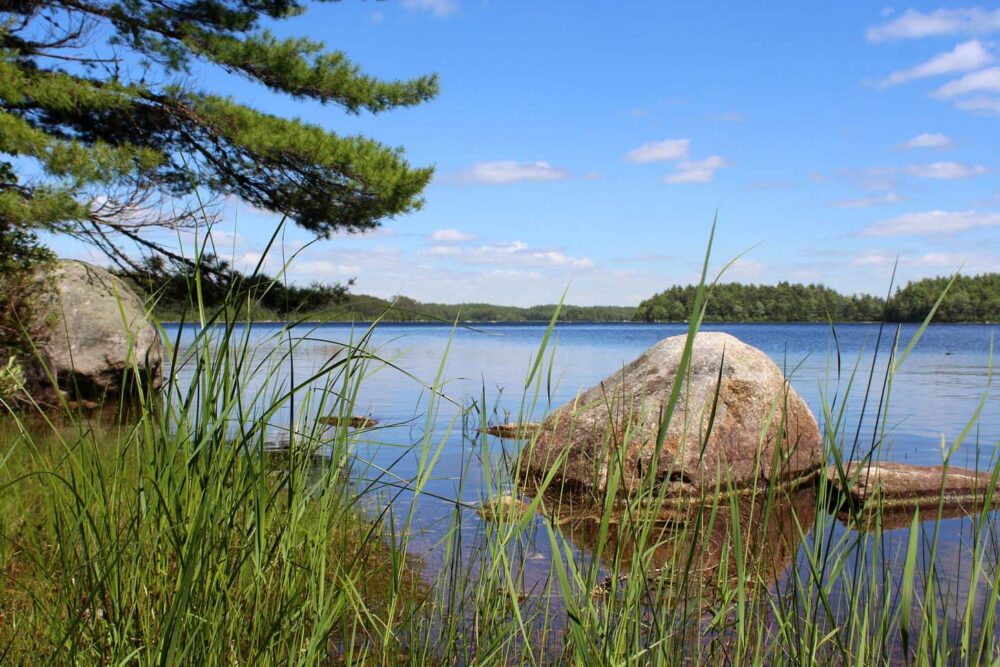
Shaped by retreating glaciers thousands of years ago, these pretty lakes are lined with Acadian forest and studded with boulders, lilypads and islands of varying size.
Small yet carefully composed campsites nestle into the trees, cleverly located as not to overlook any others. Stargaze from right outside your tent, in Nova Scotia’s only Dark Sky Preserve.
Quite simply, Kejimkujik National Park is a paddler’s haven. And here’s everything you need to know about planning your own Kejimkujik canoe trip.
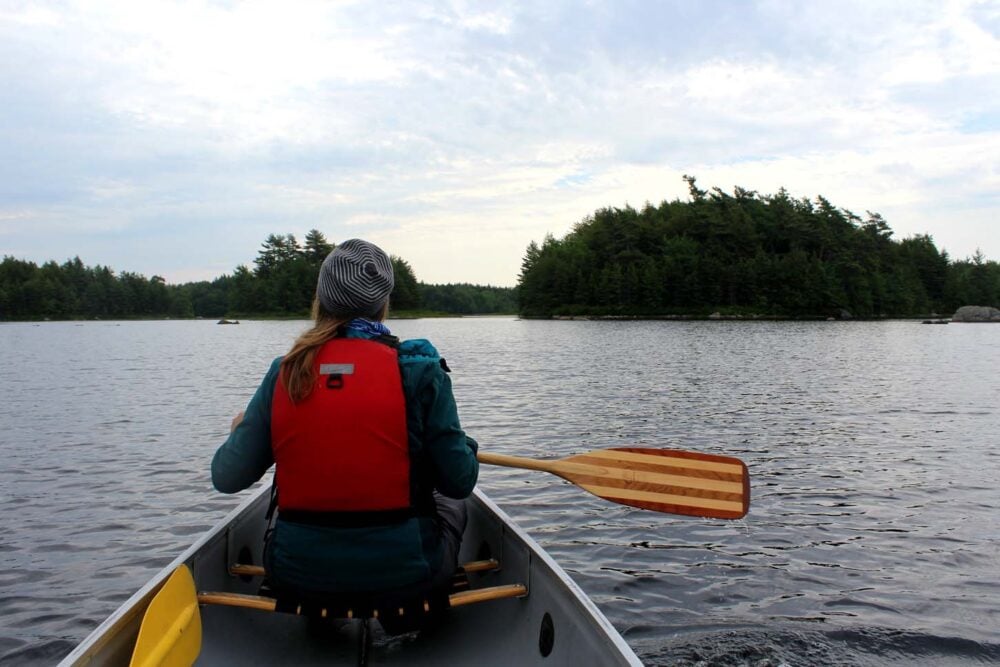
Shaped by retreating glaciers thousands of years ago, these pretty lakes are lined with Acadian forest and studded with boulders, lilypads and islands of varying size.
Small yet carefully composed campsites nestle into the trees, cleverly located as not to overlook any others. Stargaze from right outside your tent, in Nova Scotia’s only Dark Sky Preserve.
Here’s what to expect in this post:
Kejimkujik National Park and National Historic Site is situated in Mi’km’aki, the traditional lands of the Mi’kmaq.
Published 2018, updated April 2022. Thank you to Parks Canada for helping make this trip possible and Cody from WhyNot Adventures for helping to plan our route.
Backcountry necessities
- Always bring the 10 Essentials
- Know how to stay safe in the backcountry
- Remember to Leave No Trace to help keep the wilderness wild
- Understand how to avoid negative bear encounters
- Trying out backpacking for the first time? Read Backpacking 101
- Check out our packing guide with gear recommendations
- Sign up to our newsletter for a free paddling checklist
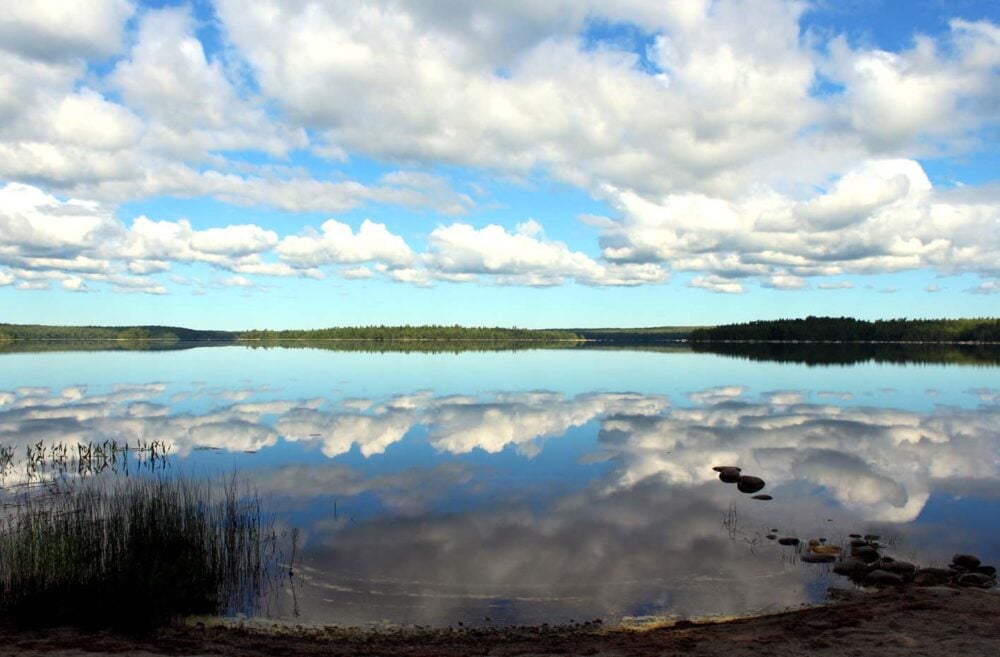
An introduction to Kejimkujik National Park
Kejimkujik National Park (pronounced ‘kedgie-ma-koo-jik,’) is located in southwest Nova Scotia, Canada.
It is a park of two parts, with one protected area situated inland and another by the ocean. In this post, I’ll be talking about the inland section only. Kejimkujik Seaside is located 100km to the east.
Kejimkujik National Park may have been established in 1967 but this area has been important to the Mi’kmaw people for millennia. The name of the park is derived from the Mi’kmaw word Kejimkuji’jk, meaning little fairies.
The abundance of wildlife in Keji made it the perfect place for the semi-nomadic Mi’kmaw people to stop for part of the year.
Recent research has uncovered over 60 Mi’kmaw sites, including fish weirs, encampments, hunting territories, portages, trails, and burial grounds. The canoe routes have been used by the Mi’kmaw for thousands of years.
For these reasons, Kejimkujik became a National Historic Site as well as a national park in 1995.
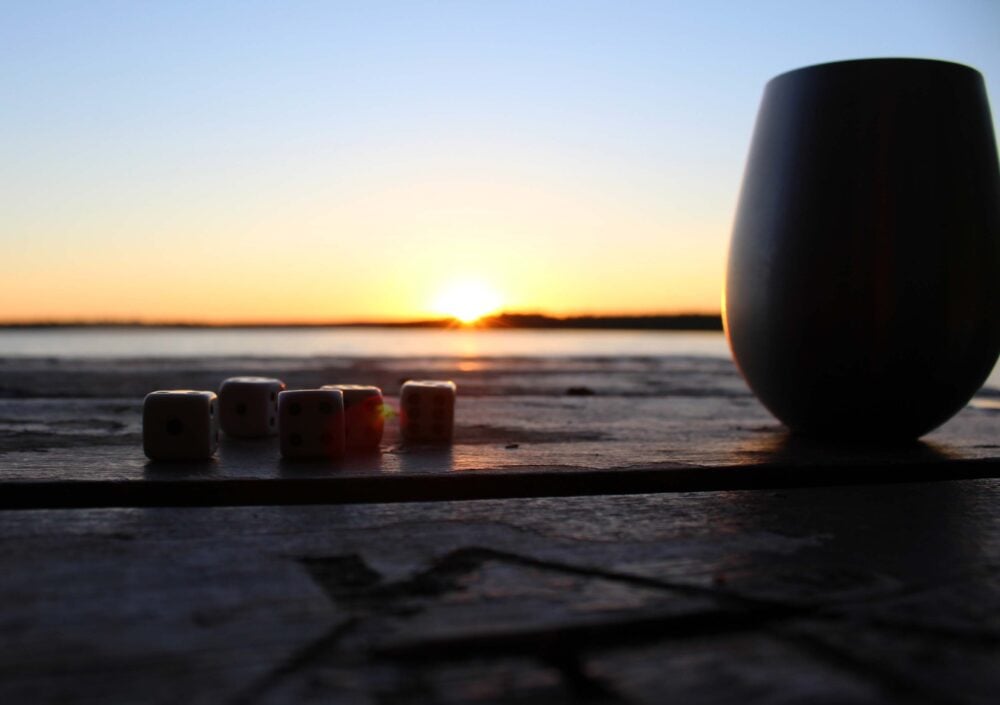
Tobeatic Wilderness Area
At more than 120,000 hectares, the Tobeatic Wilderness Area is the largest protected region in the Maritimes. It neighbours Kejimkujik National Park, thereby forming a vast protected landscape.
The Tobeatic Wilderness Area preserves the headwaters of nine major river systems following to the Fundy and Atlantic coasts. It is an important wildlife habitat for many animals, including moose, trout, black bear and pine marten.
Some paddlers explore the Tobeatic Wilderness Area and the Shelburne Heritage River via Kejimkujik National Park. We had intended to do so ourselves but the weather was against us when we arrived at the closest access point (Peskawa Lake).
The Tobeatic Wilderness area was part of the Tent Dweller’s Route over a hundred years ago. Not heard of the Tent Dwellers? Neither had we until we started travelling in Nova Scotia!
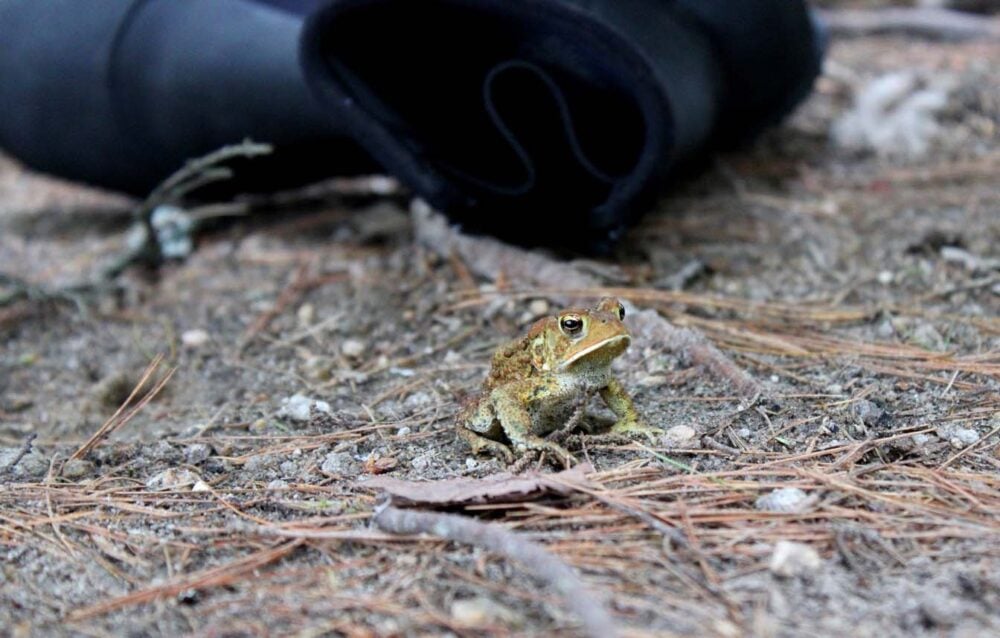
The Tent Dwellers in Kejimkujik
European settlement of the area began in the 1820s. In the early 20th century, it became a popular place for sportsmen to hunt and fish.
The Tent Dwellers is a non-fiction book written by Albert Bigelow Paine about a month-long canoe fishing voyage in what is now Kejimkujik National Park and the Tobeatic Wilderness area.
Described with plenty of tongue-in-cheek wit, the story of Albert and Eddie (plus their guides Charles the Strong and Del the Stout) exploring and fishing their way through this area in 1908 is a must read for anyone planning a Kejimkujik canoe trip.
We purchased a copy at the Visitor’s Centre and worked our way through it over the week.
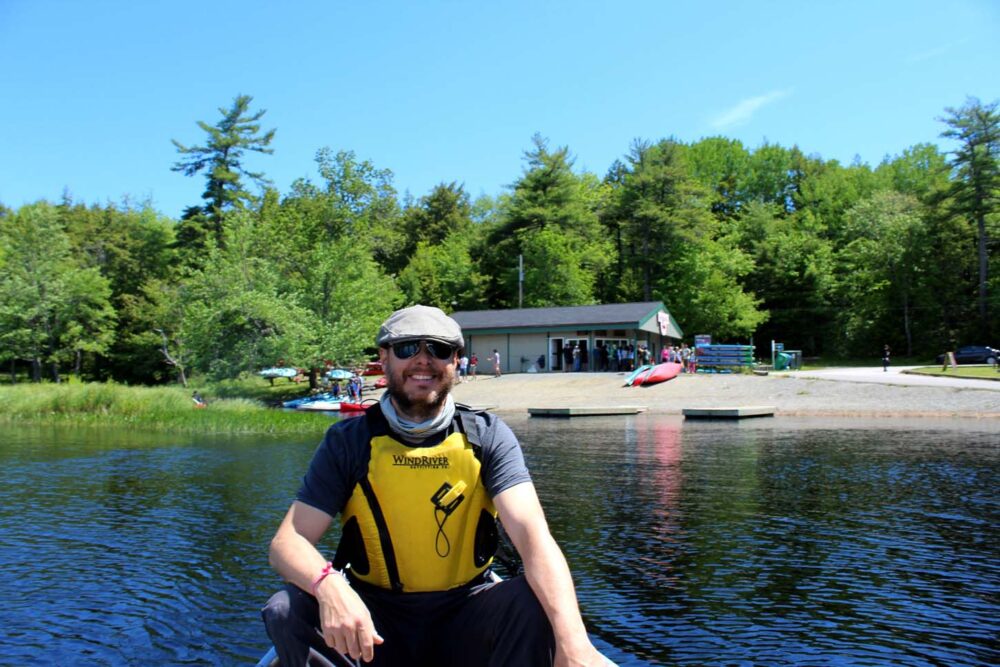
Canoeing Kejimkujik National Park: Our experience
Before getting into the trip planning guide, I’m going to share an overview of our own paddling trip in Kejimkujik in 2018. If you like, you can skip to the guide by clicking here.
Discovering Kejimkujik National Park
When originally researching places to go in Nova Scotia, I didn’t initially think of canoeing. To tell you the truth, I was thinking more about lobster and whale watching. The discovery of Kejimkujik National Park right in the middle of southern Nova Scotia was something of a revelation.
We were so excited by the idea, we immediately put aside a whole week on our Nova Scotia itinerary. Most notably it was the week over the summer solstice.
A week amongst the lakes and wildlife of the park was more than enough to wind down and get onto ‘Keji time.’ We defined this as not really being in a hurry to go anywhere.
This was helped by the fact our trip included three nights at one particular site, a site I believe to be one of the best in the whole of Kejimkujik National Park (psst, it’s site 32).
Other factors included short paddling and portage distances, those wonderfully clean and well-set up campsites and warm, mostly sunny weather. Better still, it felt like we had Kejimkujik all to ourselves. Almost.

Meeting the local residents of Keji
The water, skies and forests of Keji are packed with wildlife, from tiny salamanders and frogs to turtles, deer and loons.
There are black bears out there too, but we (luckily or unluckily, I’m never sure) didn’t bump into any on our seven-day canoe trip.
Something we also didn’t see, as mentioned, was many humans. After launching at Jake’s Landing, the groups of day-trippers melted away and the water was all ours. Our first evidence of other visitors wasn’t until day five; a couple of red kayaks in the distance on Peskowesk Lake.
A few other canoes came and went from our eyeline over the next few days but no-one was close enough to actually speak to until day seven, our final one in the park.
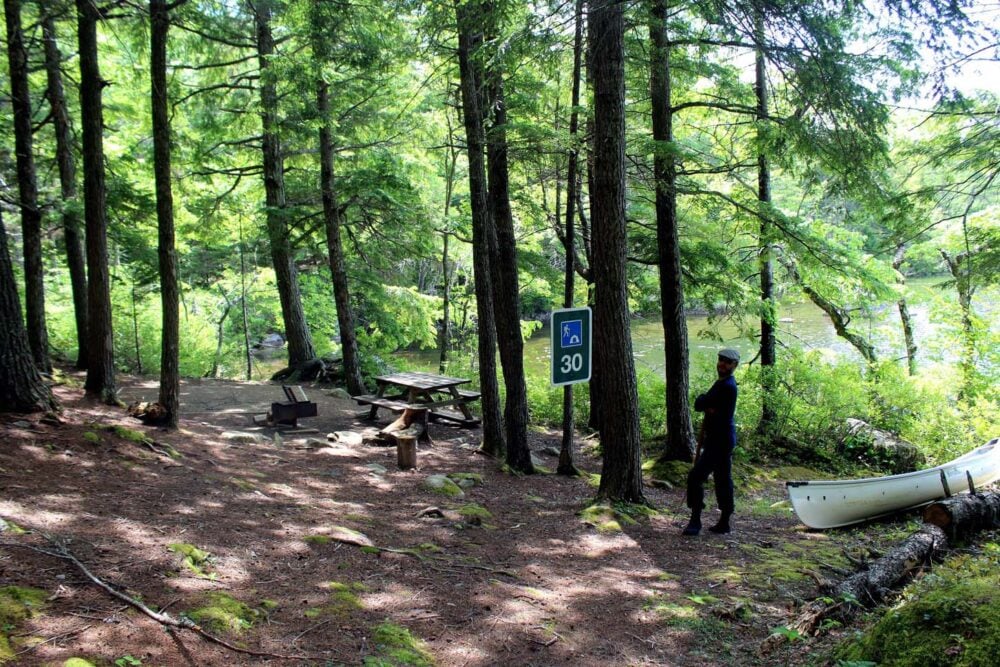
Snapping turtles of Kejimkujik
A curious thing happened on the morning of day five of our trip, which also happened to be my 29th birthday. While having breakfast on the beach at our base camp, we noticed what looked like three sticks poking directly out of the water.
Having been in Kejimukujik for a while now, we knew that these were in fact not sticks, but actually, three turtle heads peeking above the surface. After remaining steady for the duration of our breakfast, it was clear that they were watching us.
It wasn’t too strange until we both returned to the tent to get supplies for the day and spotted two of the turtles wandering the beach in our absence. They were snapping turtles, almost prehistoric looking with spines on their tails and heads.

In the midst of nature
The larger one (about the size of an average housecat), seemed to be scouting the perimeter of the beach while the other was pacing the shoreline. The third turtle was still in the water, seemingly keeping watch from there. From the forest overlooking the beach, we started theorising what was going on.
Were they checking for food left by campers? Planning an invasion of the island?
It all became a lot clearer when the turtle at the shoreline started digging. She was trying to nest! All three turtles had been watching and waiting for us to leave, to ensure that the female could lay her eggs on the beach in peace. The larger turtle was apparently some kind of bodyguard and the third a lookout.
Neither of us had ever seen behaviour like this, from turtles or otherwise. We quickly left the island and hoped that our presence hadn’t disturbed them too much.
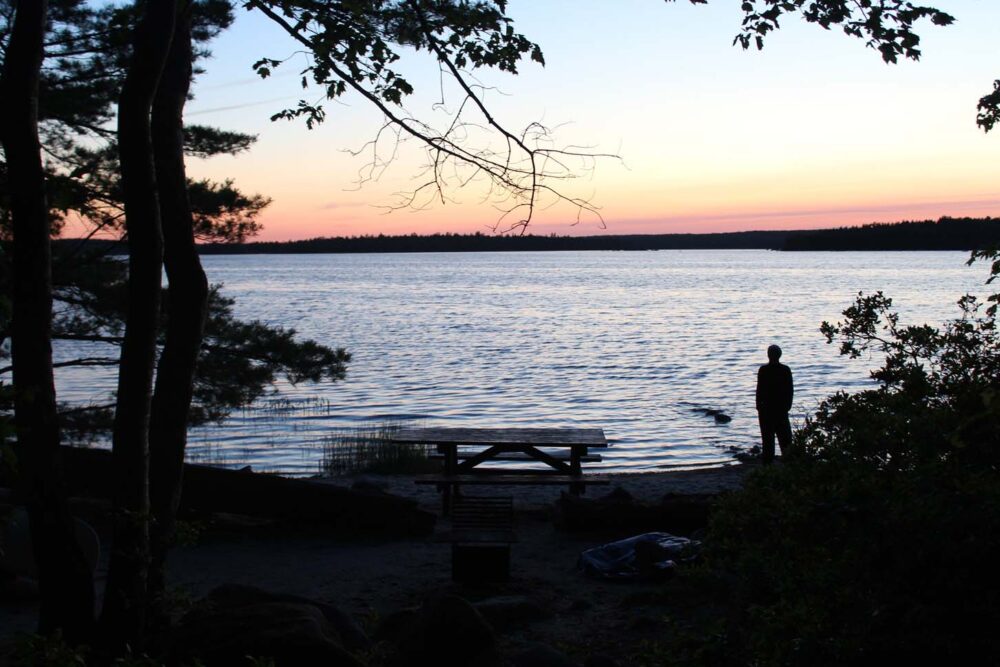
Exploring the Silver Lakes
Mindful to keep away while the turtles did their thing, we left and paddled to the Silver Lakes area. We had heard that these lakes had the clearest water in Kejimkujik. Something quite characteristic of Keji I haven’t mentioned yet, you see, is the rusty brown coloured water so often seen in the park.
It is nicknamed Mersey tea and is caused by decomposing organic materials seeping into the water. We saw and waded through much Murphy tea, but also plenty of water so covered with pollen that it resembled a radioactive substance.
Over in Silver Lakes, however, the smaller waterbodies here had nothing of the sort. Just clear, clean water in which we could easily spot small fish, tadpoles, frogs and those boulders that lie just under the surface that we had so regularly scraped paddled upon elsewhere in Keji.
The day after our Silver Lakes excursion was one of those rare, absolutely perfect paddling days. The lake was a mirror image, reflecting the fluffy clouds and blue sky onto the surface. The wind, which had been a constant presence almost every waking moment in Kejimkujik until that point, was non-existent.
This was a day to get on the water early and enjoy every moment. Lucky then, that our last campsite for the trip was site 26, only one portage and about 4km of paddling distance away. In many ways, this was one of the laziest canoe trips we have ever done but I don’t feel bad about it!
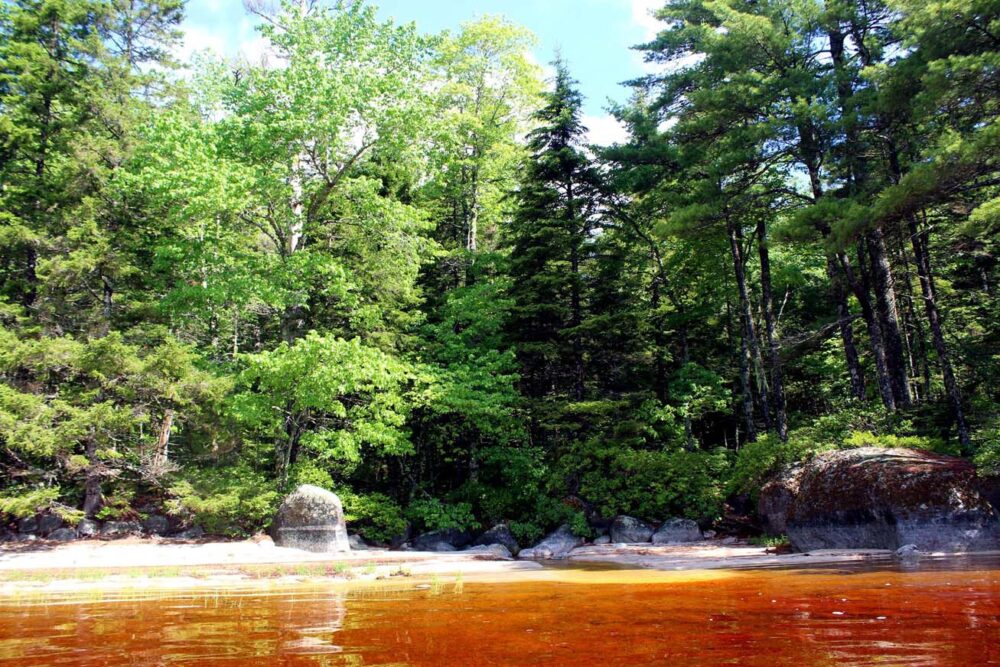
The wilderness will welcome you
We had hoped to travel into the Tobeatic Wilderness during our Keji canoe trip. Unfortunately, it was not meant to be. On both arrival and departure to Pecahwa Lake (site 40), we experienced strong gusting wind and waves swelling over a metre.
Sometimes the wind just doesn’t allow for the exploration possibilities we would like. Having now read the Tent Dwellers in full, perhaps we will return one day to complete the full route instead. Besides, I firmly believe in always leaving something for another time.
Fitting for so many of our own outdoor adventures, the Tent Dwellers ends with the following passage.
If you are willing to get wet and stay wet – to get cold and stay cold – to be bruised, and scuffed, and bitten – to be hungry and thirsty and to have your muscles strained and sore from unusual taxation: if you welcome all these things, not once, but many times, for the sake of moments of pure triumph and that larger luxury which comes with the comfort of the camp and the conquest of the wilderness, then go! The wilderness will welcome you, and teach you, and take you to its heart. And you will find your own soul there; and the discovery will be worthwhile!
– Albert Bigelow Paine, The Tent Dwellers: Sports Fishing in Nova Scotia in 1908
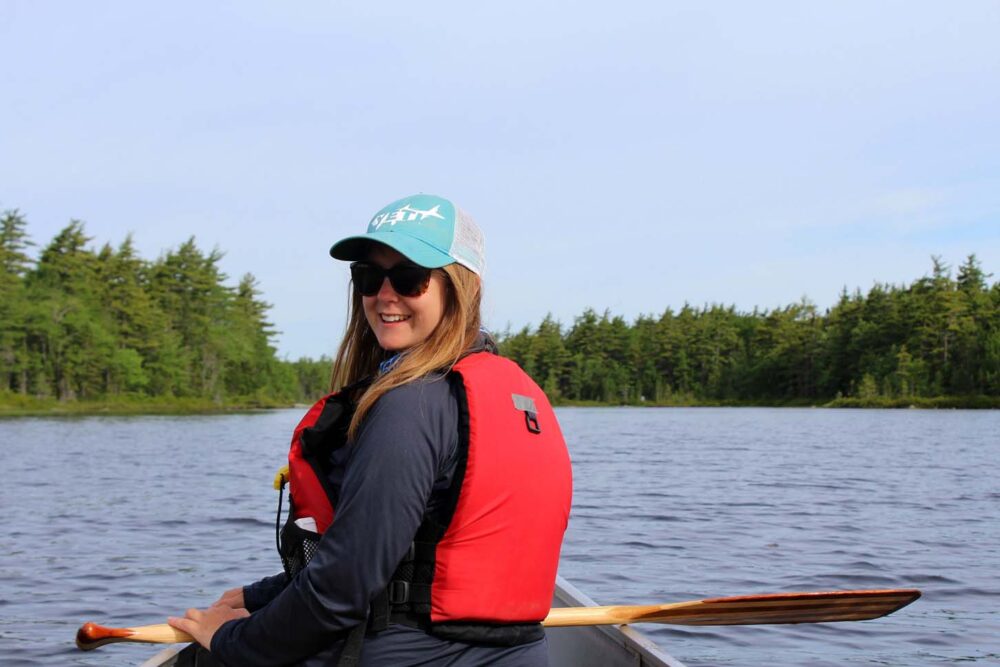
Kejimkujik National Park: Canoe trip planning guide
Inspired to plan your own canoe trip in Kejimkujik National Park? Here’s what you need to know, from the best time to go, essential reservation information and campsite details.
There are affiliate links in this section. If you make a qualifying purchase through one of these links, I may receive a small commission at no extra cost to you.

How to get to Kejimkujik National Park
Kejimkujik National Park is situated in the interior of southern Nova Scotia, Canada. The park is easily accessible via a two-hour paved drive from Halifax – click here for directions.
The main launching point for Kejimkujik canoe trips is Jakes Landing, about 10 minutes drive from the park entrance.
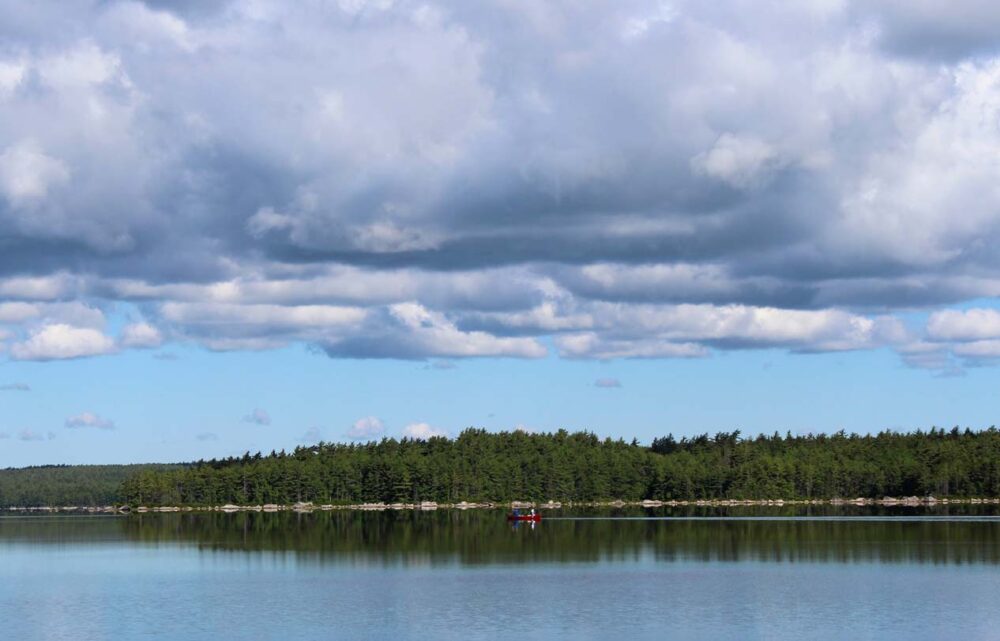
When to go
While Kejimkujik National Park is technically open all year round, the operating season for the backcountry campsites is the third week of May to late October. Before this time, there are very few facilities available. In 2022, the Visitor Centre opened on 20th May.
The most popular time to paddle in Keji is in July and August, when the weather is the warmest. June and September can also be lovely months to canoe in the park, especially as there are far less people around. The bugs are more prevalent in June, however.

Route planning
One of my favourite things about Keji has to be the seemingly endless different canoe routes and trips possible.
- Only here for the day? Paddle up the Mersey River and try to spot wildlife or head to one of the sandy beaches on Kejimkujik Lake.
- Prefer not to portage? Stay at one of the campsites on Kejimukujik Lake (at the most, an 8km paddle from Jake’s Landing) and explore from there.
- Only have a couple of days but want to complete a full circular route? Start at Big Dam and loop around to Frozen Ocean and finally Kejimkujik Lake.
- Not keen on crowds? Go south, where there’s usually no more than one campsite on each lake.
- Want a more rustic camping experience? Use the park as a springboard to explore the surrounding Tobeatic Wilderness Area, where there are no established facilities or campsites.
With such a spread of portages, lakes and experiences, Keji has an adventure for every type of paddler.
Download Kejimkujik’s backcountry map here – please note that this a detailed 6mb file.
Alternatively, you can also use the map on the Parks Canada Reservation System for trip planning purposes. Select ‘Backcountry’ then ‘Kejimukujik’ from the drop down. Click ‘Map’ and then ‘Backcountry Reservations.’
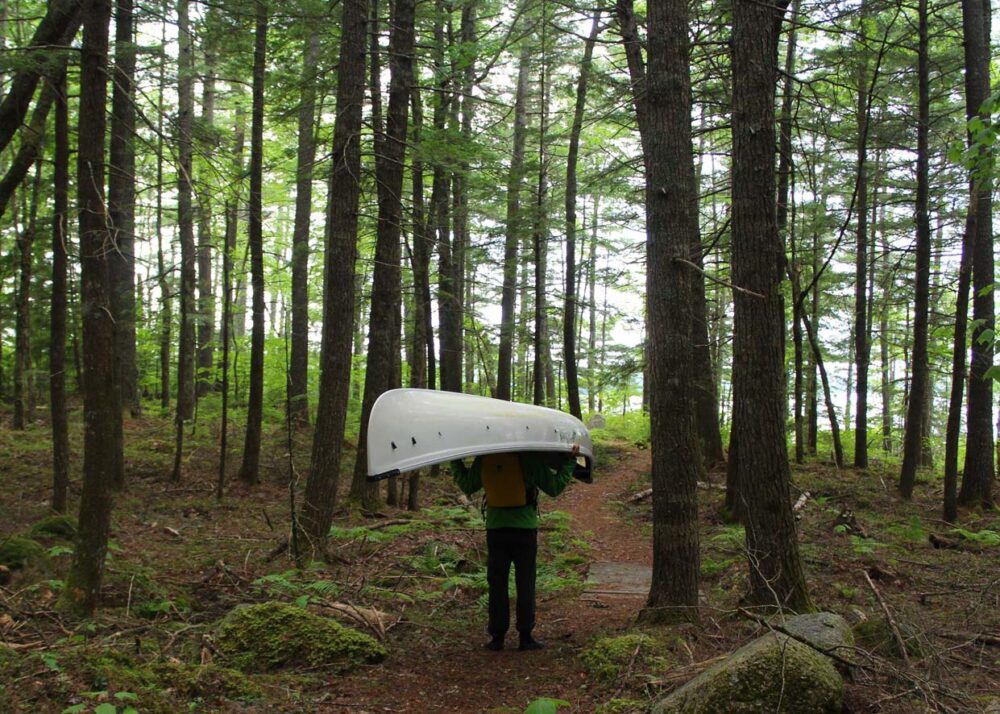
Portages
Parks Canada lists all of the portages and what to expect on this page.
The portages vary in length from 150m to 2km and are generally well maintained and flat. There are regular canoe rests on portages longer than 300m. We found the put-ins to be rockier and more difficult on the lesser used portages, further away from Kejimkujik Lake.
Kejimkujik’s portages were pretty easy (as easy as a portage can be anyway) compared to many we have experienced in British Columbia. It would have been possible to use a canoe cart on all of the portages we used.
The biggest issue we had on portages was….mosquitoes! They were absolutely ferocious during our mid June trip. By the end, we were wearing head nets while portaging.
Canoe rentals
If you need to rent a canoe or any other kind of camping equipment for your paddling trip in Kejimkujik National Park, look no further than WhyNot Adventures. The owners of this canoe outfitter know Keji inside out.
Canoes (three different types) can be rented by the day or week, plus portage carts, tents, cooking stoves and more. As of 2022, WhyNot Adventures requires at least one day notice for rentals.
Why Not Adventures also offers fully guided canoe trips in Kejimkujik. This Four Day Southern Lakes tour covers similar ground to our own trip described above.

Fees
Kejimkujik National Park is administrated by Parks Canada. National Park day use fees must be paid on entry into Kejimkujik National Park for the length of your intended trip.
Consider getting a Discovery Pass (National Park annual pass) if you are planning a longer trip to Kejimkujik. The Discovery Pass also allows access to National Historic Sites, of which Nova Scotia has plenty!
In addition to the day use fees, canoeists must pay overnight camping fees. In 2022, this fee is $26.25/per night/per campsite. There is an additional reservation fee, more information below.
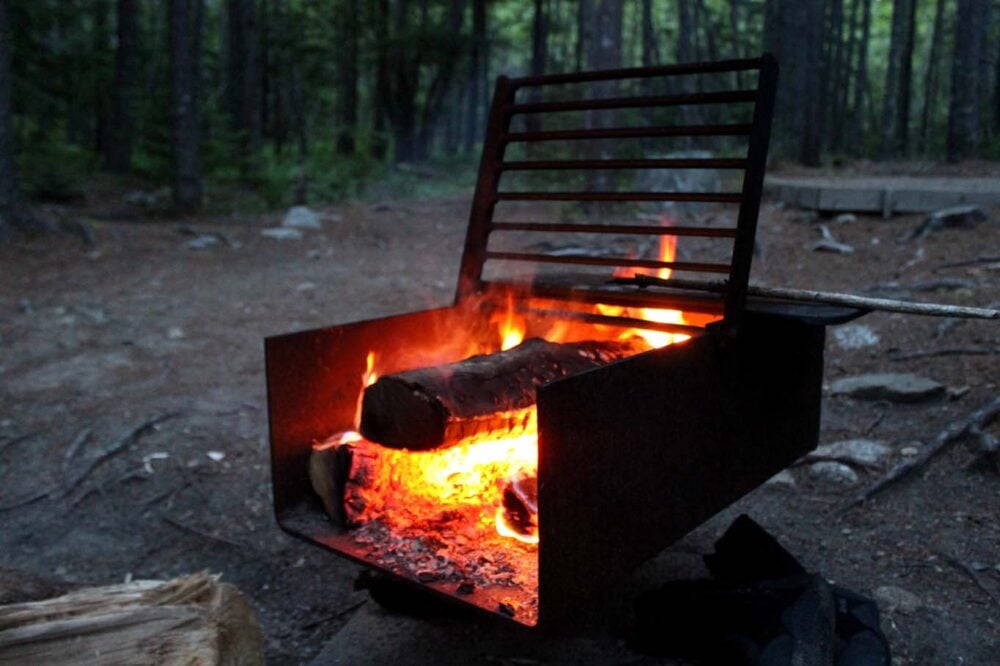
Reservations
All of Kejimkujik’s backcountry campsites can be reserved in advance. For this reason, reservations are recommended.
In 2022, the reservation system opened on 17th February at 7am AST. At this time, all campsites for the entire operating season were available to book.
July and August dates disappeared reasonably quickly, with weekends being snapped up first. At the time of this update (April 2022), about 80% of summer dates are booked.
Campsites on Kejimkujik Lake tend to be the most popular due to their easy accessibility. The least popular campsites are those on Peskawa Lake.
Reservations can be made online or by phone – 1-877-737-3783 in North America, 1-519-826-5391 outside.
Online reservations cost $11.50 and phone reservations $13.50. The same fees are charged for modifications or cancellations.
On arrival at Keji, you must register at the Visitor Centre before launching. Paddlers receive a backcountry permit, which must be returned after finishing.
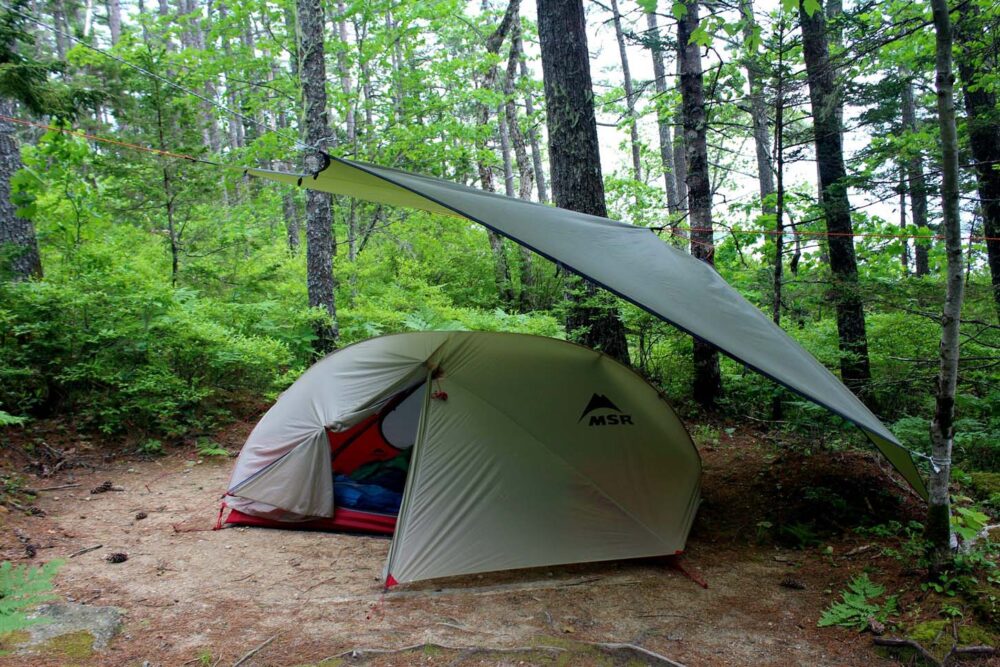
Camping details
Kejimkujik’s backcountry campsites all have:
- two tent pads
- an outhouse
- a picnic bench
- firebox
- pulley system (to hang food items out of reach of bears and rodents)
Backcountry campsites in Kejimkujik are allocated in advance and are for exclusive use by one group. This allows for a very private and organised camping experience, with no rush (at least, on the day) needed to ‘secure’ a good site. Our favourite campsite was, by far, site 32.
To camp at one of Keji’s backcountry campsites, you must hold a valid permit. This is only available from the Visitor Center. Reservations are highly recommend for the summer months.
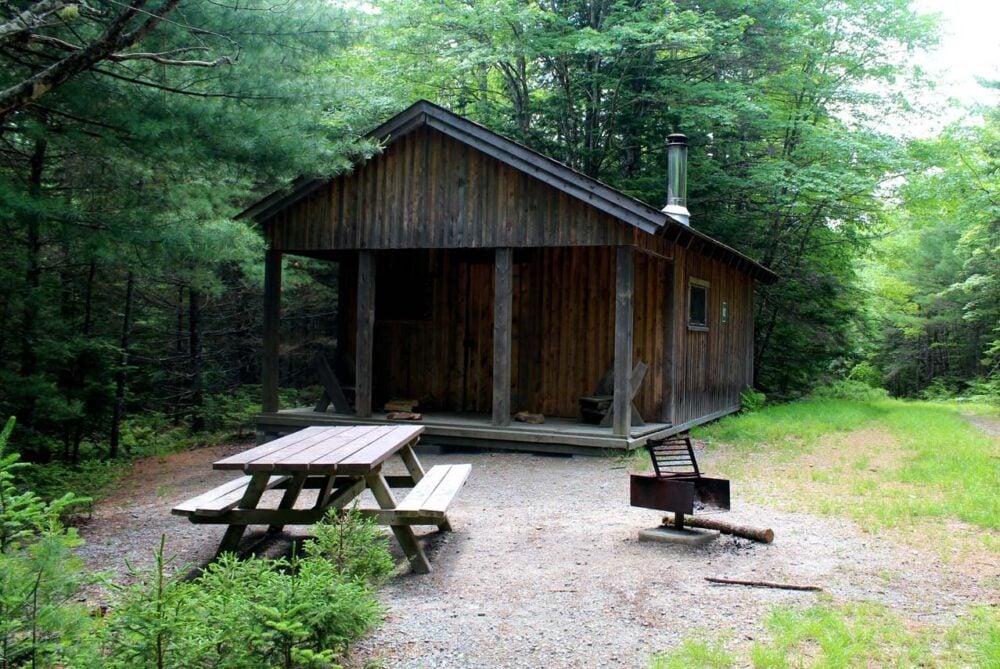
In addition to the backcountry offerings, Kejimkujik has an extensive frontcountry campground (Jeremy’s Bay) with over 300 campsites.
Completely upgraded in 2019, free solar powered showers are included in the nightly site fee. We stayed here the night before our Kejimkujik canoe trip.
Looking for somewhere to stay before or after your Keji canoe trip?
Bear River Vineyards – Cosy, comfortable accommodation on a vineyard
B&B Art of Germany – Highly rated on Booking.com
Whitman Inn – Great value
Firewood restrictions
In 2018, Kejimkujik started firewood importation restrictions for visitors to prevent the spread of invasive pests. Firewood must be purchased within the park, with only a few exceptions.
Most of the backcountry campsites have firewood provided directly at the site, while campers in the Southern Lakes area need to collect wood at a drop-off point. These were easy enough to find with the map provided at the Visitor Centre.
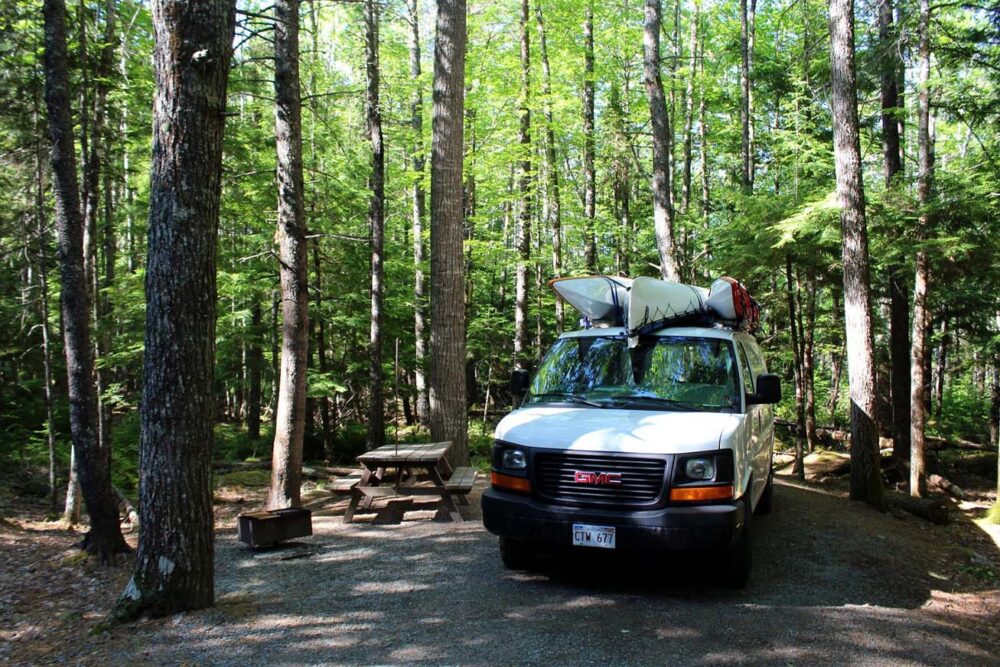
Wildlife
Kejimkujik is home to plenty of animals, including black bear, coyote, turtles, snakes, salamanders and owls.
As mentioned, we saw a lot of wildlife in Kejimkujik. This included some of the more irritating kind; mosquitos, black flies, no-see-ums and ticks were all present in the Park during our visit in mid-June. However, we found it completely bearable.
The most buggy places were (unsurprisingly) the portages and more forested campsites (of which we didn’t stay in many). We used our mosquito head nets a couple of times, once while paddling on a windless day and also during a couple of portages.
We also brought mosquito coils and plenty of DEET repellent. Regular tick checks were necessary; we found around a dozen deer ticks in our clothing over the week. Interestingly enough, JR was bitten three times while I wasn’t at all.

Tips and advice
Here are some quick reflections from our Kejimujik canoe trip:
- The signage for sites and portages was usually only visible when reasonably close. This maintained a more natural environment but did mean closer map reading than usual (a good challenge!)
- The Southern Lakes area had spotty phone signal. In Western Canada, we are used to having no phone signal at all on canoe trips so it was a little strange to be able to get an up-to-date weather forecast
- Considering the ease of access to the Park, we had assumed Kejimkujik would be fairly busy in mid-June. In the frontcountry areas on the weekend, this was definitely true but we were surprised at how few people we saw in the backcountry
- The size and shape of the lakes were much more varied than in the West. Gone were the long and narrow valley lakes we are familiar with in British Columbia; they were replaced by unpredictable shorelines, clusters of islands and scattered rocks
- We would have liked to fish on this trip but the Southern Lakes area is limited to catch and release fishing

Essential items to bring
As well as the 10 Essentials and all your required paddling safety gear, I would recommend bringing the following items when paddling in Kejimkujik National Park:
- Insect repellent. As mentioned above, be sure to bring your favourite insect repellent to Keji. You may also want to consider head nets, coils or any other type of repellent device you like to use
- Camping stove. While campfires are usually allowed in Keji, it’s never good idea to completely rely on one for cooking. Bring a camp stove
- Swimwear – We swam a lot while canoeing in Keji! Don’t forget to bring something to swim in
- Water filter – With all that Mersey Tea in the water, you’ll definitely be wanting to filter the lake water. For canoe trips, we like gravity filters
- Spare paddle. As with all canoe trips, it’s a good idea to have a spare canoe paddle, just in case. On one of our canoe trips, someone mistakenly took mine!
- Backcountry permit. Don’t forget to pick up your backcountry permit at the Visitor Centre before heading to your launch site
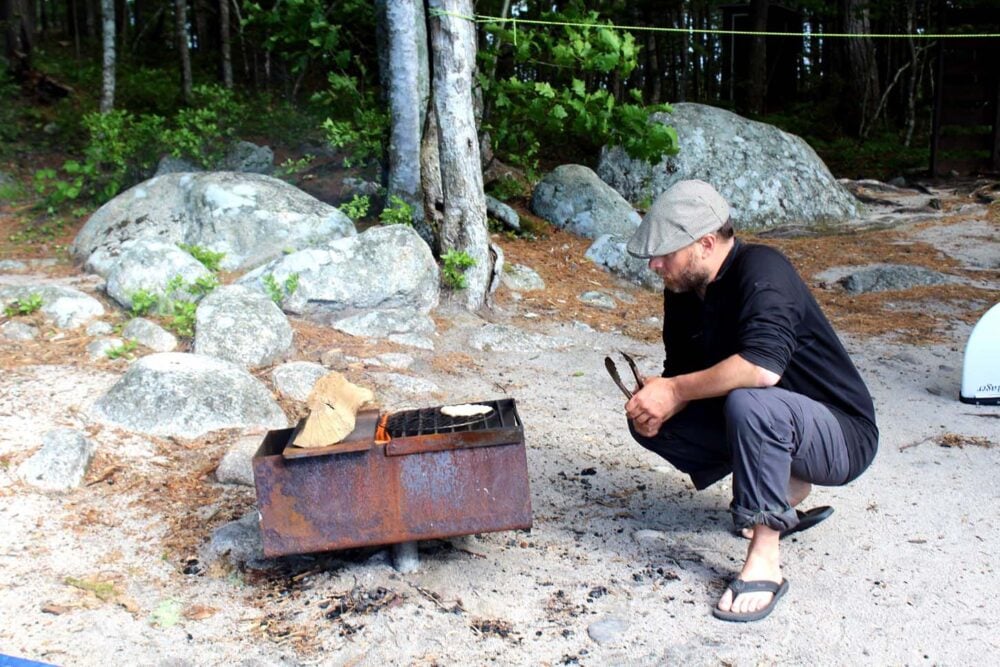
Other things to do in Kejimkujik National Park
Kejimkujik National Park is not just a world class canoe trip destination. There are opportunities to hike, bike, car camp and also connect with Mi’kmaw culture (check out the guided cultural programs list)
Short on time? Consider a hike on the easy Mill Falls Trail. The 2km return path starts behind the Visitor Centre and follows the Mersey River to the eponymous falls.
If you have the chance, consider visiting Kejimkujik Seaside as well. This coastal park features gorgeous white sand beaches.

Check out these other paddling posts next:
Kayaking the 100 Wild Islands, Eastern Shore, Nova Scotia
Maligne Lake: Complete Camping and Paddling Guide
17 of the Best Canoe Trips in British Columbia
Canoeing Lake Louise, Moraine Lake, Emerald Lake: Complete Guide and Comparison
Murtle Lake, Wells Gray Provincial Park: Complete Paddling Guide
Paddling the Trent Severn Waterway near Campbellford, Ontario

One half of the Canadian/British couple behind Off Track Travel, Gemma is happiest when hiking on the trail or planning the next big travel adventure. JR and Gemma are currently based in the beautiful Okanagan Valley, British Columbia, Canada. Consider buying us a coffee if you have find any of our guides helpful!

I spent four days paddling in Keji about a decade ago when we lived in Nova Scotia. We did the Big Dam/Frozen Ocean loop then spent a few nights on Keji Lake. One night as we were laying in the tent we heard some enormously large walking around our campsite. We were terrified. When we eventually got up the courage to shine a light outside, we discovered it was a huge… porcupine 🙂
Hahaha I definitely can relate! We were convinced there was a grizzly outside our tent when we paddled the Yukon River…but it was a rabbit!
The Big Dam/Frozen Ocean Loop in Keji definitely looked interesting! I didn’t know you used to live in NS Taryn.
Good article, great photos. Having made many multi-day back country trips in Kedji over the last 30 plus years, i would say that you did hit some of the high spots. However, some people would find the park fees a bit of a deterrent. Nova Scotia has an abundance of wilderness lakes as attractive as kedji, and more secluded, in many cases. I would point to the Tobeatic wilderness area, which has no “developed’ campsites, but plenty of lovely places to camp, and the Medway Lakes wilderness area as both being very similar landforms and lakes as Kedji…but free. There are online maps for Canoe Annapolis County and canoe Lunenburg Queens Counties giving details of routes, campsites and carries. cheers
Hi David,
I’m glad you liked the post! We heard a lot about the Tobeatic Wilderness Area and would love to go on a canoe trip there when we next visit Nova Scotia. As lovers of beyond the path places and travellers on a low budget, we typically do head to places that have lower fees or are free to explore. However, I became a Canadian citizen in May of this year and consequently was given a Cultural Access Pass which entitles me to free entry in all of Canada’s National Parks for one year. We have been trying to take advantage of this pass as much as possible.
@David Macdonald,
Hi David – I appreciate your comments. Can I contact you for more information about longer paddling trips in NS?
Thanks!